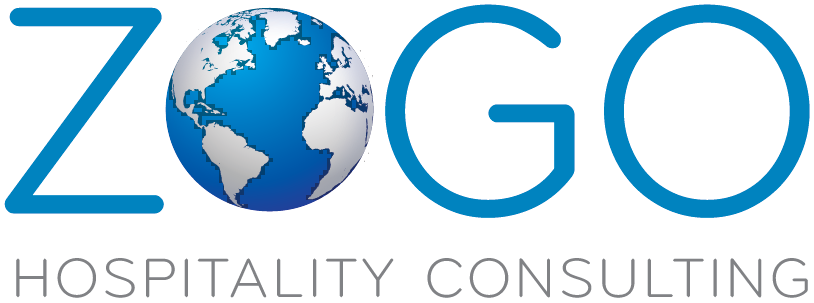Hotels are in the spotlight more than ever as stakeholders and media expect them to’ open hot’; that is, ready for great service on day one and ideally at a high occupancy. Reaching that stage of knowledge and confidence while hiring, receiving material, setting up departments, and preparing each operational space is not easy. At Zogo, we are dedicated to developing bespoke PreOpening training material to prepare for a hot start and for future hires.
Having standardized PreOpening training courses ensures consistency in operational standards, service levels and simplifies the planning for the onboarding process. There are many ways to train new colleagues; Classroom, demonstration, hands-on workshops, eLearning, etc.; whatever the methodology, the material needs to address several learning styles, be engaging, test knowledge, and ensure that the colleagues follow a learning curve that culminates in Simulation training and a successful Live-Day.
Creating PreOpening Training Material
So, where do you start? First, you need to have your ideas aligned, processes agreed upon, and Standard Operating Procedures (SOPs) written. The SOPs will be the building block to many of the courses. Once agreed, formulate the training strategy.
The amount of effort/time and cost are often deciding factors when developing PreOpening Training. If this is purely a one-off training for an independent hotel, most of the Training will be done in-house based on the knowledge of the team hired. If this material is for a Brand Chain, the training material will be created for all PreOpenings.
PreOpenings are unique in that it is the only time you will have your full team Training at the same time, without the hotel being operational. You will have your Team’s full attention, shared excitement, and have the greatest team-building of all time. Therefore, you may consider for PreOpenings a combination of eLearning, Classroom, online, and Hands-on Training.
Types of Training
Classroom Training is an excellent format for training modules such as Brand Knowledge, Standards, and Guest Service. Classrooms allow the trainers to utilize PowerPoint, activities, and fun, purposeful exercises to teach the concepts, allow for engagement, and test knowledge. Classroom training is also a great way for colleagues to get to know each other and begin working together as a team.
Hands-on Training is utilized for system and operations training. This training format allows the trainer to explain a concept, demonstrate, and have the trainees practice independently.
eLearning is a great tool for training flexibility and ensuring a consistent message. eLearning for programs such as ServSafe, PCI and GDPR requirements, Health and Safety, etc., can be accessed online through 3rd party vendors, reducing development costs. Develop bespoke eLearning modules for PreOpening and all for future hires.
Online Training moved to the forefront during the 2020 Pandemic restrictions. Many vendors could not conduct the training onsite and reverted to training via an online platform such as Webex, Zoom, or MS teams. The benefit to this was flexibility in Training dates and reduced cost for flights and accommodations.
Developing the Material
To determine the best format to conduct the training, the first step is to plan each department’s training path.
- Sort SOPs in Operational areas within the department. For example, Front Office – Prearrival, Arrival, Inhouse, Cashiering, Departures, Daily Reports, Night Audit.
- Create your training modules outline for each department. For each module, determine the following:
- The Context (the Why)
- Objectives (what you want to achieve
- Who – who will attend
- Timing – how long do you think it will take to train this module (this will change as you begin writing)
- Type of training – classroom, hands-on, eLearning, or online training
- Once the modules have been agreed, you are ready to write. Considerations when writing training material.
- Colleague learning curve and attention
- Include Ice Breakers, Activities, and Energizers that reinforce the module topic
- Include tests for knowledge
- There must be a clear beginning (intro), middle (content), and summary (wrap up)
- PowerPoints should have only a few bullet points – the participants should not be reading blocks of text
- Only utilize authorized photos in the training material
- Prepare handouts and any other material required
- For Hands-on training, ensure that PMS, POS, Credit Card machines, etc. are set up to support the training
- Prepare training scenarios for practice sessions
- Practice content for timing
- The creation of eLearning modules can be an expensive and time-consuming process depending on the number of modules and the quality of the eLearning system. The recommendation is always to pilot the material content first and then work with the eLearning company to convert it into a robust and effective eLearning course.
- Once the training material is written, the next step is to have the courses signed off for content and reviewed for flow and grammar.
- Depending on the situation, a Train the Trainer session may be needed for the team to roll out new hotels training.
- The last step is to Pilot the training material and make any adjustments based on the feedback.
Colleague training is an essential element of any hotel opening successfully. For Hotel Brands, it is even more important that each hotel follows the standards to ensure consistency in service. Creating a robust onboarding training will not only ensure that the hotel opens to the highest standards, but that future colleagues will be afforded the same learning opportunity. Training is not only an investment in your colleagues but also in the Brand reputation.
